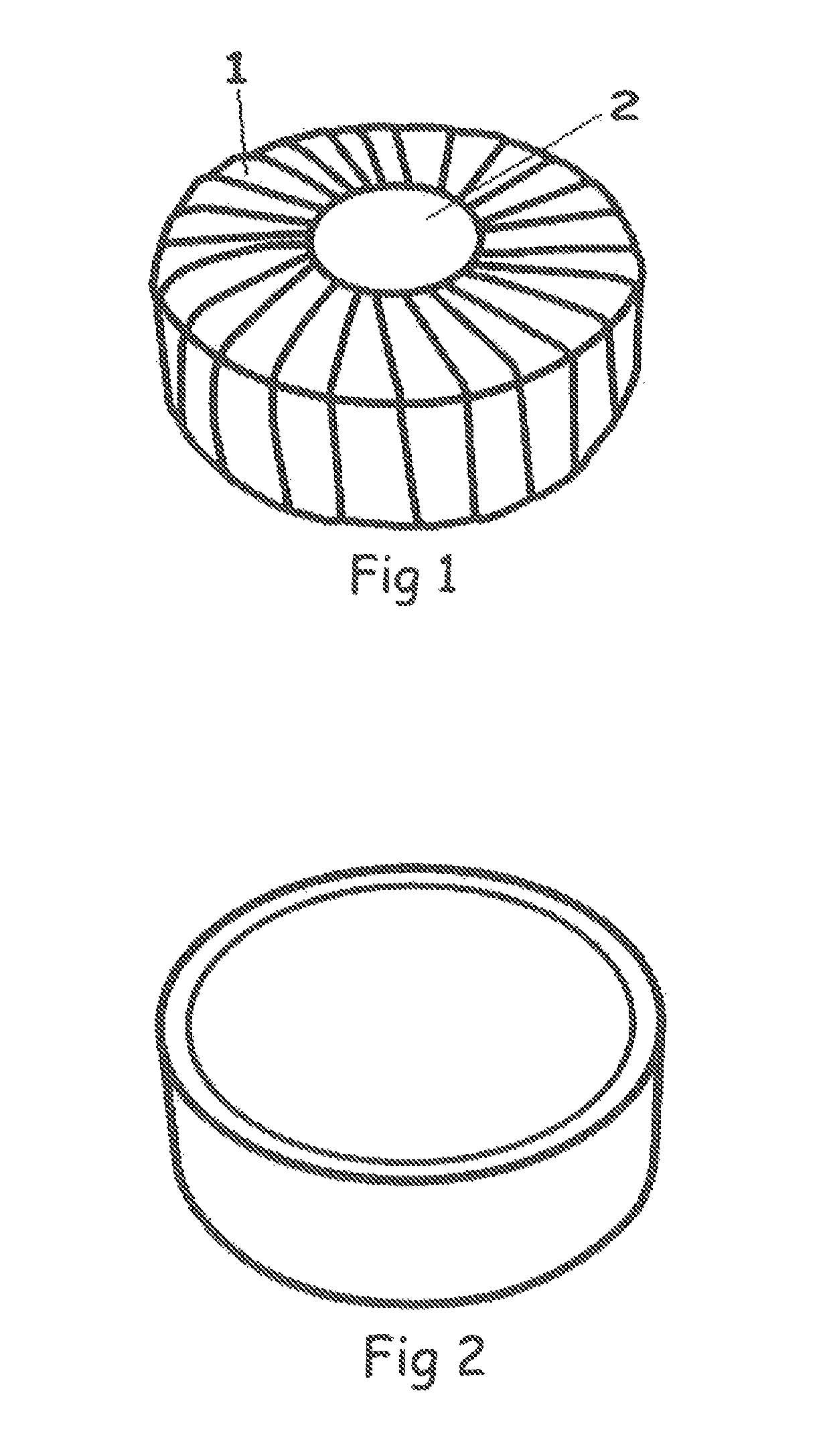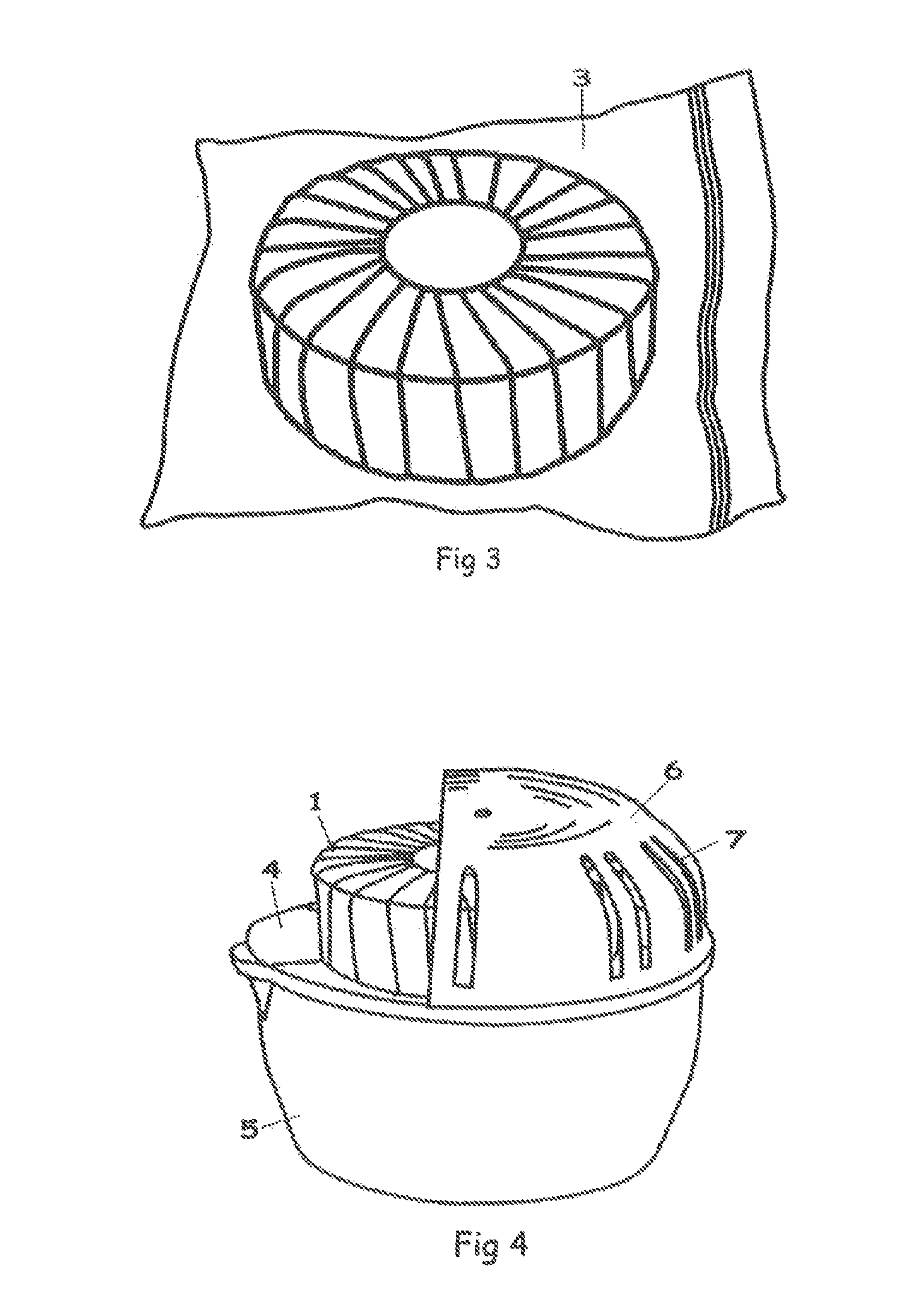Desiccant tablet encapsulated in a special cloth
a technology of desiccant tablets and cloths, which is applied in the field of desiccant tablets encapsulated in special cloths, can solve the problems of not being able to address the problem of reducing air moisture, reducing the absorption capacity of desiccant tablets to 18-36%, and not being able to solve the problem of slow operation
- Summary
- Abstract
- Description
- Claims
- Application Information
AI Technical Summary
Benefits of technology
Problems solved by technology
Method used
Image
Examples
embodiment
PREFERRED EMBODIMENT
[0018]The desiccant tablet encapsulated in non-woven fabric is put to use inside a plastic device especially designed to capture moisture. Its top portion has a grating (6) with large-sized slots (7), which enable moist air to flow through them. In the middle of this plastic device, there is a flat divider (4), which has slots through which the brine falls into the bottom container (5), and upon which the moisture-absorbing tablet is placed, and into said bottom portion is where the moisture falls in the form of a saline solution.
[0019]The desiccant tablet is made up of crystals, made up mostly of calcium chloride salts, which are hygroscopic and deliquescent, attracting the water vapor in the air and absorbing moisture, thus dissolving into said salts. This tablet absorbs the excess moisture in the air, thereby turning ambient moisture, when above 55-60%, into a saline solution. The saline solution absorbed by the tablet passes through the holes in the divider (...
PUM
| Property | Measurement | Unit |
|---|---|---|
| temperature | aaaaa | aaaaa |
| humidity | aaaaa | aaaaa |
| transparent | aaaaa | aaaaa |
Abstract
Description
Claims
Application Information
 Login to View More
Login to View More - R&D
- Intellectual Property
- Life Sciences
- Materials
- Tech Scout
- Unparalleled Data Quality
- Higher Quality Content
- 60% Fewer Hallucinations
Browse by: Latest US Patents, China's latest patents, Technical Efficacy Thesaurus, Application Domain, Technology Topic, Popular Technical Reports.
© 2025 PatSnap. All rights reserved.Legal|Privacy policy|Modern Slavery Act Transparency Statement|Sitemap|About US| Contact US: help@patsnap.com



